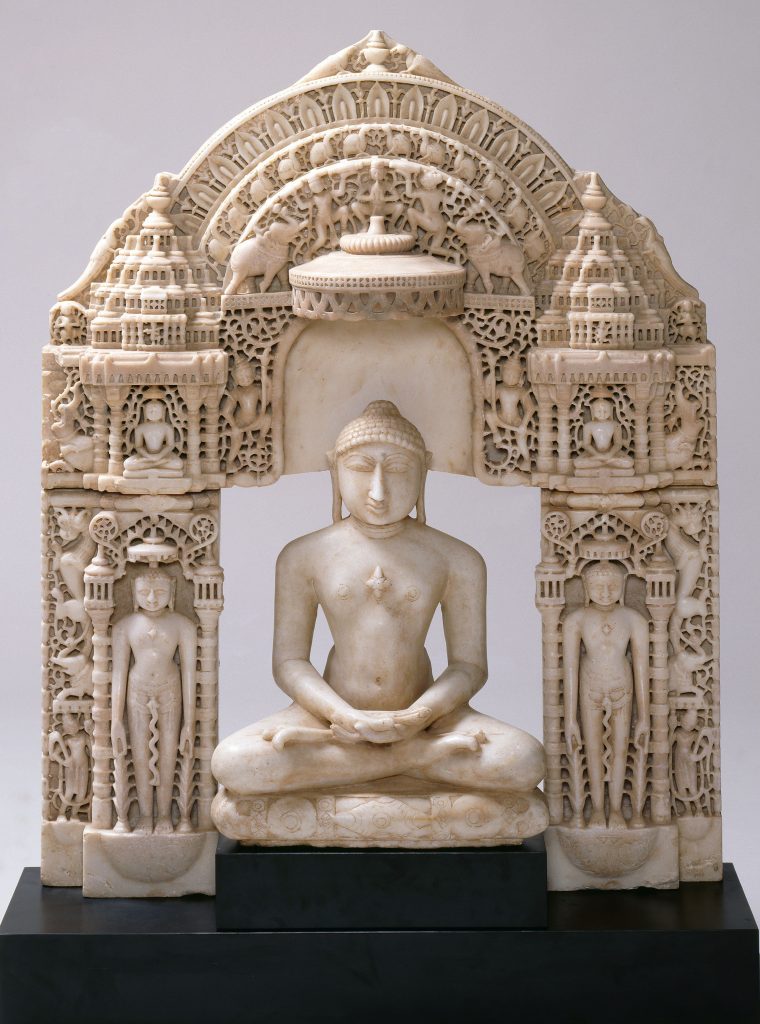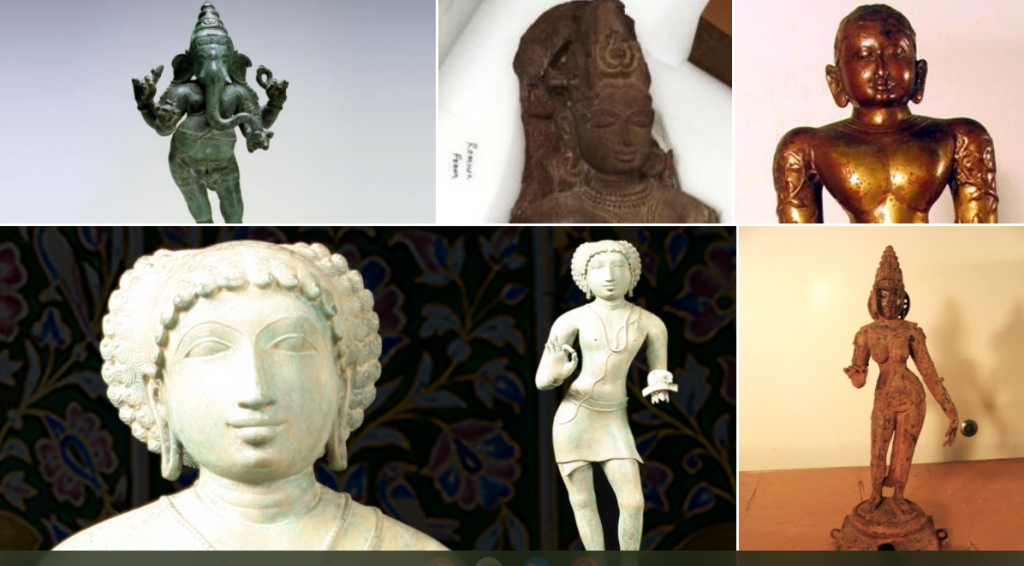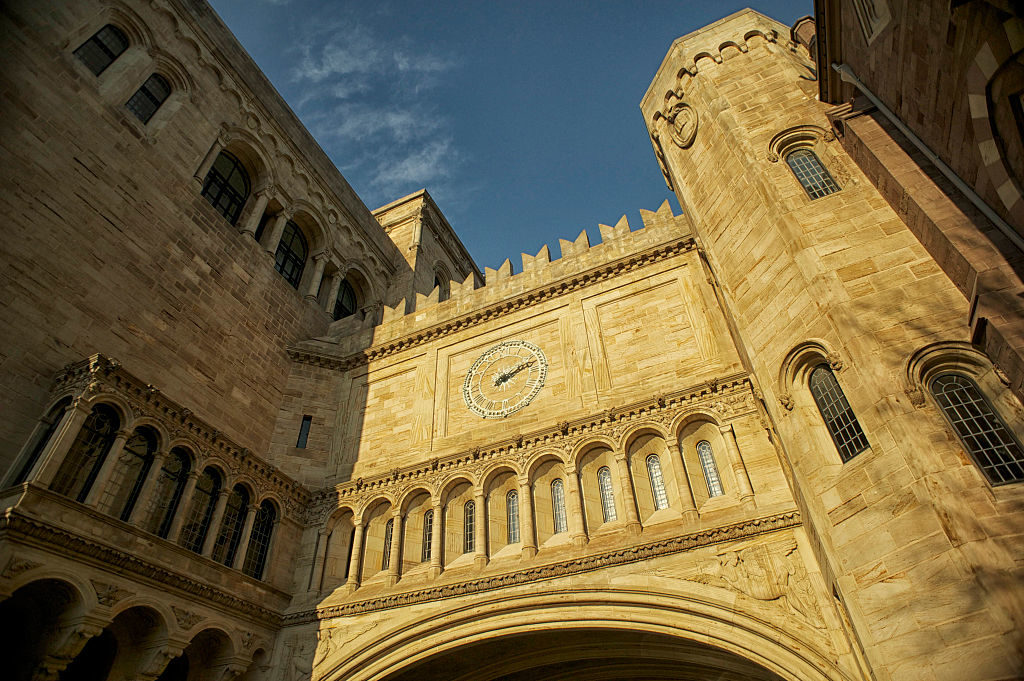Law & Politics
Watchdog Group Links Rubin-Ladd Foundation, a Prolific Museum Benefactor, to Jailed Antiquities Dealer Subhash Kapoor
Ten U.S. art institutions have been linked to the foundation.

Ten U.S. art institutions have been linked to the foundation.

Dorian Batycka

Sparked by the revelation of links between an American arts and culture foundation and a convicted art thief, a group of volunteer researchers has identified dozens of donations by the foundation to U.S. museums that could call the objects’ provenance into question.
The exposé, reviewed by Artnet News, revolves around a slew of documents released by the National Gallery of Australia on August 5, associated with 14 artworks it said it would be returning to India. The works, including ancient sandstone sculptures and 19th-century ceremonial objects, were sold to the museum by the now-jailed art trafficker Subhash Kapoor, who is charged with running a $143 million art smuggling ring. Kapoor was arrested in 2011 and is awaiting trial in India on charges of conspiracy to commit theft. Prosecutors in the U.S. want to extradite him; last month, a British antiquities restorer named Neil Perry Smith was charged for restoring looted booty associated with Kapoor.
The Rubin-Ladd Foundation’s name first came up in provenance documents provided by the NGA relating to a number of works it had acquired from Kapoor. One of them, for a 10th-century Indian sculpture, describes the chain of ownership as “with the Rubin-Ladd Foundation and on loan to San Antonio Museum of Art, 2003 or before.”
After combing through the foundation’s tax filings, a group of volunteer researchers from the India Pride Project, dedicated to helping return the country’s cultural heritage, found evidence that the foundation purchased several works from Kapoor that were later loaned or sold to U.S. institutions. India Pride Project says at least 10 museums received donated works from the foundation between 2004 and 2013.
The revelations come at a moment when advocates of restitution in a wide range of circumstances—from artwork sold under duress during the Nazi era to objects stolen from African nations during the colonial period—are gaining increased attention. Last year, American authorities returned group of antiquities worth an estimated $1.2 million that had passed through Kapoor’s gallery and were seized during Asia Week in 2015 and 2016.

A selection of objects returned to India following a probe by Attorney General Loretta E. Lynch during a ceremony with Prime Minister Narendra Modi in 2016, imported by Subhash Kapoor. Courtesy of ICE.
According to information available via public records and accessed online, the foundation is managed by Robert S. Walzer of Redding, Connecticut, a retired lawyer from the Connecticut law office of Robinson & Cole, where he was the chairman of the health law department. The foundation—a New York charity that focuses on education and culture—does not have a website or an email address, and calls to a telephone number listed by Foundation Directory Online went unanswered. (Walzer also did not respond to a detailed message sent via LinkedIn about the project’s findings.)
India Pride Project found the foundation made several purchases from Kapoor that it went on to gift to museums.
In tax filings from 2013, for example, the group found that in 2012, the foundation gifted artworks valued at $428,500 to three unnamed U.S. institutions. The documentation includes provenance details showing that several of the items in the Rubin-Ladd Foundation’s inventory were sourced from Art of the Past, Kapoor’s now-defunct Madison Avenue gallery. India Pride Project says they will be looking into the objects and connecting them with specific museums in the coming weeks.
The 10 institutions named in the Rubin-Ladd’s tax filings are: the Norton Simon Museum, Pasadena; the Michael C. Carlos Museum at Emory University in Atlanta; Yale University in New Haven; the San Antonio Museum of Art; the Los Angeles County Museum of Art; the Ackland Art Museum at the University of Chapel Hill, North Carolina; Harvard Art Museums in Cambridge, Massachusetts; the Lowe Art Museum at the University of Miami; Lehigh University in Bethlehem, Pennsylvania; and the Worcester Art Museum. It is possible that some of these works never passed through Kapoor’s gallery.

Yale University in New Haven, Connecticut, is among the institutions that is alleged to have received donated works from the Rubin-Ladd Foundation.
Artnet News reached out to all 10 museums; six did not reply to our request for comment.
A representative for the Worcester Museum confirmed it had connections to the Rubin-Ladd Foundation, stating in an email to Artnet News that it received a gift of six objects from the foundation in 2007. The representative also said that it does not have any works in the collection given by or acquired from Subhash Kapoor, and that it follows the Association of Art Museum Directors (AAMD) 2013 Guidelines on the Acquisition of Archaeological Material and Ancient Art. In March 2006, an exhibition at the museum included loaned ancient jades from the collection of Robert Waltzer, the foundation’s director, and his wife, Ann, in an exhibition called Mountain Harvests: Chinese Jades and Other Treasured Stones.
The San Antonio Museum of Art confirmed that it also has several objects acquired via the Rubin-Ladd Foundation but declined to elaborate.
Harvard Art Museums declined to comment about whether it has been a beneficiary of Rubin-Ladd gifts, despite being named in the foundation’s tax filings.
A spokesperson for the Lowe Art Museum at the University of Miami says that it does not make results of comprehensive provenance research public until they have been fully resolved. Adding that the institution is an American Alliance of Museums-accredited institution and a member of AAMD, the spokesperson said: “In keeping with established best practices, the Lowe responds promptly to all cultural property inquiries and repatriation claims lodged by the United States government, federally recognized Native American Tribes and Nations, and foreign governments with a view to addressing and correcting any verifiable collection anomalies.”
Additionally, India Pride Project found that a Kubera Idol placed in Yale University had traveled via Kapoor through the Rubin-Ladd Foundation. Artnet News reached out to Yale regarding the provenance of the object, but so far has not received a response.
Although no charge has been made with respect to the Rubin-Ladd Foundation or any of the museums named, nonprofit foundations can play a role, witting or unwitting, in routing laundered stolen art from protected archaeological sites.
“Behind every antiquities trafficking ring preying upon cultural heritage for profit,” said District Attorney of Manhattan Cy Vance Jr. after the arrest of Smith in July, “there is someone reassembling and restoring these looted pieces to lend the criminal enterprise a veneer of legitimacy.”